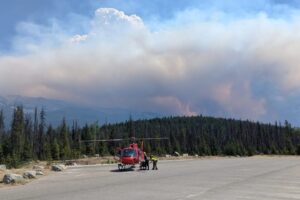To climb Mt Everest, not only do climbers need to be fit, they must acclimatize to the stratospherically thin air and take in enough food and water to maintain their strength, even though the altitude kills their appetite and even drinking is difficult. Yet there is a harder way to go to Everest: as a porter.

Porters carry up to 100kg for their clients.
Porters on Everest earn just 1,500 rupees ($15) per day. They are responsible for ensuring that all bags, food and supplies arrive safely. Often their loads, supported by old-fashioned tump lines across the top of the head rather than by backpack frames, weigh as much as 100kg.
During an 11-day trek, porters usually wear the same clothes, day and night. They won’t shower and they pay for their own meals. They receive nothing for the days before or after a trek, when they meet clients at the airport and chaperone them to hotels. Without a generous tip on the final day, porters won’t even make a profit, because they spend much of their daily salary on the food required to perform their duties. Some porters take the safe option and skip meals.
At night, they join porters from other groups and sleep away from the main camp, sometimes eight to a bed, sharing just a few blankets between them.
The working conditions of porters have improved in recent years. Previously, they were treated like packhorses. But even their current treatment doesn’t fit the value they bring to expeditions.

Nate Menninger is one of the only non-locals to work as a porter on Everest.
Nate Menninger is a 24-year-old American obsessed with Everest. Instead of spending tens of thousands of dollars climb it, he decides to visit the great mountain like a local Nepali: by being employed as a porter.
The previous summer, Menninger guided in Nepal, where he taught himself to speak Nepalese. It helps him connect with his colleagues over their 11 days together.
“When I was guiding that summer, I saw how porters lived,” he explains. “I saw them sleeping on the floor. I saw how they ate, and how strong they were.”
Even though he’s a lot taller than the native Nepalis, he finds the job incredibly taxing. Being cold at night makes it difficult to recover from the immense physical labor of the day’s work, yet he understands that this is just a glimpse of what a porter really goes through.
Most porters do five or six treks each season and take just a couple of days off. They know they are lucky to be selected for work since other porters are available. In the off season, they work as farmers.
Farming in Nepal is no walk in the park, either. Unlike in Western agricultural production, they don’t use machinery. During my time in Nepal, I remember a farmer coaxing two reluctant old oxen to drag his wooden plough. The oxens’ resistance meant that the farmer needed to use more strength to upturn the soil. It’s brutally hard physical work. But it hadn’t occurred to me that he might also work as a porter when the farming season ends.
Menninger was not qualified to guide to the summit of Everest. That would have been beyond his capabilities. Instead he hiked from Lukla, 2,900m above sea level, to Everest Base Camp. On the final day, he carried 100kg on the seven-hour trek back to Lukla. He was tipped a total of $100 by the customers and sums up the experience in one word: HARD.





